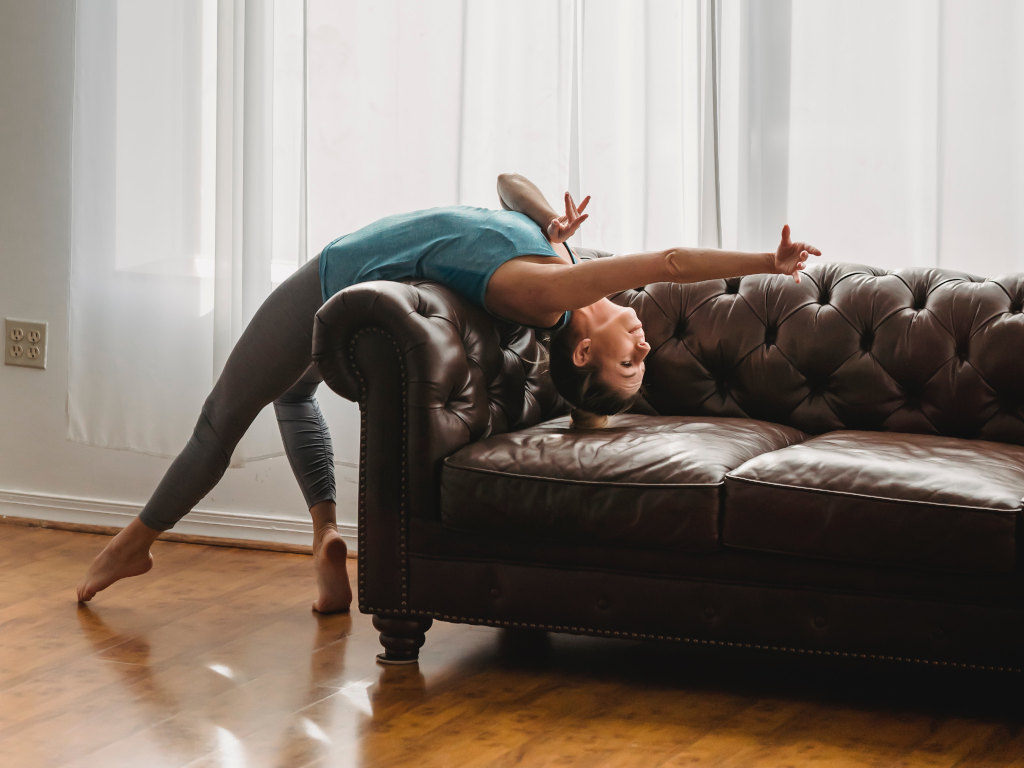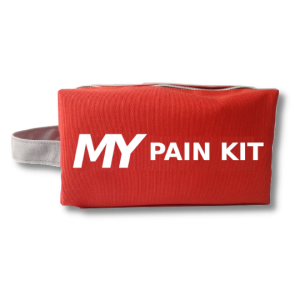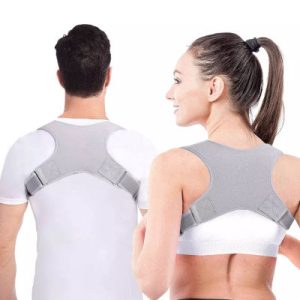Our Back Pain and Neck Pain is getting worse as our daily use of computers / screens keeps us glued to our desks. In This Article:
- How Bad Is Your Sedentary Lifestyle
- Prolonged Sitting Causes Problems
- How Do We Avoid Back Pain From Sitting?
- What Are Movement Exercises?
- What Are The Benefits Of Movement?
- What Are Stretching Exercises?
- What Are The Benefits Of Stretching?
- What Are Strengthening Exercises?
- What Are The Benefits Of Strengthening Exercises?
- Frequently Asked Questions
- Additional Reading
- Find Your Pain Kit For Back Pain & Neck Pain
How Bad Is Your Sedentary Lifestyle?
We are sitting for longer periods of time than ever. It’s not just about your job – from once we get up in the morning til we go to bed at night sitting for longer periods is our daily reality. Typically, people sit for a very large part of the day:
- At Breakfast
- While Commuting to work
- For 8 to 10 hours a day at our work desks
- On our commute home
- During Meal Time
- Finally, to watch the TV and relax in the evening
Then we get to do it all again the next day! This prolonged sitting posture over time has hugely negative health-implications, and not just musculoskeletal pain and injuries.
Prolonged Sitting Causes Problems:
Back Pain and Neck Pain
Chronic back pain, and chronic neck pain are really the main issues to be caused by prolonged sitting. There are other things like tennis elbow or shoulder pain that are caused by a desk working-environment, but the big ones are neck/back.
Arthritis
Maintaining a bad posture while sitting over a long period of time puts increase pressure on your joints, and slowly but surely your inflammation can increase. The inflammatory process aggravates the effects of arthritis in your lower back and can be very difficult to treat.
Poor Circulation
Your blood pressure can increase depending on the position your body is in – with your heart working harder to pump your blood, this can only be a bad thing. Also, if you’re not getting frequent movement and exercise, your circulation will suffer longer-term.
Fatigue & Bad Mood
Maintaining your limbs and body in a slightly stressed position all day can be quite exhausting. Ever wonder why you are so physically tired after sitting at your desk all day? This could be the cause. Also – your mood will benefit from the periodic movement and stretching exercises we recommend, so it’s a win-win.
Breathing Issues
Your entire body requires oxygen to sustain it (duh!) – but your brain is particularly sensitive to oxygen depletion. If you extend your diaphragm periodically to get a full breath (repeat this several times) you will notice enhanced concentration and cognitive performance. Instead of having another coffee – why not just for a short walk?
Digestive Malaise
There is only so much room inside your body for your internal organs, and slouching in the seat causes these to compress and bunch up. As a result they don’t perform as well. In particular, we have seen many people reporting GERD or Acid Reflux that can be attributed to their bad sitting posture.
How To Avoid Back Pain From Sitting?
1. Movement

What Are Movement Exercises?
Range Of Movement Exercises are given for a specific joint where there is a decreased amount of movement.
Movement exercises promote normality of the joint and surrounding muscles and ligaments. This movement increases blood flow and helps decrease inflammation and pain.
So get up from sitting regularly. Take regular breaks from sitting in front of the screen – in particular! Then you can perform some more complex movement exercises, by incorporating different movement patterns – even things like Pilates and Yoga work well!
What Are The Benefits Of Movement?
- Increase Movement in the Joint Itself
- Decrease Inflammation and Pain in the Joints
- Increase the Function of a Joint and the Whole Limb
- Improve Movement Efficiency
- Increase Independence
- Decrease Pain
- Improve and Maintain Joint Integrity
- Movement helps restore normal function of the joint and is the first step in treating the cause of the pain and inflammation from prolonged sitting
2. Stretch Exercises

What are Stretching Exercises?
Any exercises that stretch the muscle fibres with the aim to increase muscle flexibility and improve joint range of movement. This helps restore function, decrease pain and prevent injury in the future. At the very least, we need to stretch both low back musculature and neck muscles. These are the areas that get affected most from “a sitting lifestyle”.
What are the benefits of Stretching?
- Increased Range of Movement
- Decreases Muscle Tension
- Improves Muscle Tone
- Increases Proprioception (awareness of body position)
- Improves Neuro-muscular Coordination
- Reduces the Risk of Muscular and Soft Tissue Injury
- Improves Nutrients / Blood Flow to Muscle and Joints
- Increases Blood Flow to Help Decrease Inflammation and Pain
3. Strength Exercises

What are Strengthening Exercises?
Any exercises designed to increase the strength of a specific muscles. Strengthening exercises to a muscle encourage the activation and growth of the muscle, increasing the strength. Weak muscles can be prone to injury of the surrounding joints and soft-tissue.
Strength training doesn’t always involve weights! You can do body-weight exercises too – a simple push-up or sit-up can be very effective!
What are the benefits of Strengthening Exercises?
After Movement and Stretching, we see that Strengthening a vulnerable part of your body is THE main way you can help avoid an injury happening. Some more benefits are:
- You Feel Stronger!
- Helps Restore Proper Joint Function
- Decreases Inflammation and Pain
- More Efficient Muscles – Use Less Energy
- Fight back against Arthritis developing
- Reduce Your Risk of an Injury Reoccurring (this is the big one!)
- Improve Function of the Muscle
- Improve Quality of Movement
Summary
A combination of movement, stretching and strengthening exercises is the ultimate tool in fighting neck and low back pain caused by sitting at the office desk. Quick fixes like lumbar supports and other ergonomics can help but we have found that a proper methodology to restore movement, stretch and strengthen works the best. Steer clear of drugs – aim for a drug free recovery if possible.
Overworked and unbalanced muscles need rehabilitation!
Frequently Asked Questions:
It’s all about ergonomics, posture and movement. If your desk isn’t set up properly and you are stretching and straining to see the monitor, or use the keyboard and mouse, then you will put your body in a stress position for long periods of time. If you sit in the desk all day without getting up to stretch and move, this makes the bad posture turn into pain and stiffness.
An Ergonomic desk is one that’s set up to fit you properly, and makes it easy to see the screen and use the keyboard and mouse without stretching. Similarly your seat will be properly designed so it has you sitting correctly, and not slouching or balancing in an awkward position all day. In short – it’s a desk that fits you properly.
Get up and move around. Spend a few minutes each hour taking care of your posture, moving and stretching. In fact, if you are already feeling pain, you will need to solve the underlying issue, and then work to stop it coming back. Try a combination of:
- Wear A Brace or Support
- Heat Therapy
- Massage
- Movement Exercises
- Stretches
- Strength Exercises
- Cold Therapy
Tech Neck is a silly name given to people who spend a lot of hours at their desk / screen, working. After this much time, people can develop neck and back pains, and since Tech workers were commonly working longer hours, they seemed to be more prone to developing this painful condition. In reality, it’s not just Tech workers, but anyone who spends their time sitting down all day – so that includes drivers, reception, security jobs etc.





